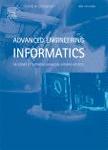版权所有:内蒙古大学图书馆 技术提供:维普资讯• 智图
内蒙古自治区呼和浩特市赛罕区大学西街235号 邮编: 010021

作者机构:East China Univ Sci & Technol Minist Educ Key Lab Smart Mfg Energy Chem Proc Shanghai 200237 Peoples R China East China Univ Sci & Technol State Key Lab Ind Control Technol Shanghai 200237 Peoples R China
出 版 物:《ADVANCED ENGINEERING INFORMATICS》 (Adv. Eng. Inf.)
年 卷 期:2024年第62卷
核心收录:
学科分类:08[工学] 0812[工学-计算机科学与技术(可授工学、理学学位)]
基 金:National Natural Science Foundation of China [62394345, 62136003] Shanghai Committee of Science and Technology, China [22DZ1101500] Shanghai Science and Technology Planning Program [23DZ2201700] National Natural Science Foundation of China
主 题:Differential privacy Mutual information Distributed optimization Inequality constraints Industrial information security
摘 要:In order to improve the overall performance of large-scale industrial processes with complex constraints, vast amounts of production data are collected for distributed process optimization. Usually, this data contains a lot of enterprise sensitive information. Considering the conventional distributed algorithm has the issue of data privacy leakage, which weakens the safety of the entire manufacturing process and poses a serious threat to economic benefit, this paper proposes a privacy-preserving based distributed algorithm for a class of optimization problem of large-scale industrial processes. Additionally, the proposed method can be applied to the privacy of industrial process optimization problems between different enterprises, such as industrial value chain optimization problems. In specific, the differential privacy mechanism is adopted to protect the data privacy of the local node. Meanwhile, the mutual information technique is adopted to analyze the information loss in the communication data. Moreover, Lagrange primal-dual method is used to deal with the coupling inequality constraint. Subsequently, rigorous theoretical proof shows the convergence of the proposed algorithm. Then, the algorithm privacy metrics fully demonstrate the rationality and superiority of the mutual information technology used in this article for designing privacy parameters. Finally, experimental results of numerical cases and ethylene process optimization show the effectiveness of the proposed algorithm.